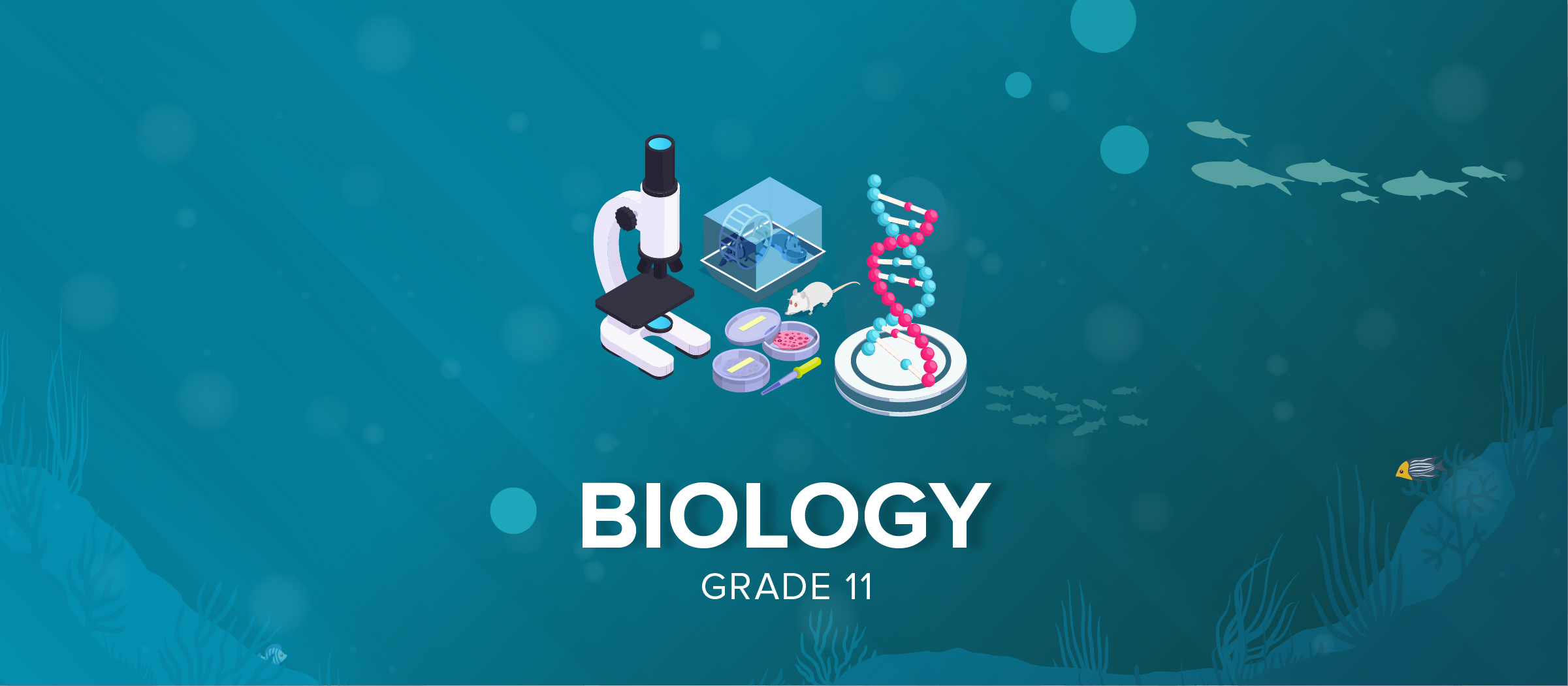
The Grade 11 Biology curriculum offers a diverse and comprehensive exploration across ten chapters. Starting with “Biomolecules & Cell Biology,” this chapter discusses about Cell types of living organisms, different biomolecules in those cells, structures and functions of different cell organelles in the cell as well as methods of cell division.
“Floral Diversity” delves into the Introduction of floral diversity including, angiosperms gymnosperms, fungi, lichen, algae, bryophyta, pteridophyta, gymnosperm and angiosperm.
“Introductory Microbiology” gives a general introduction of microbiology, structure of bacteria, mode of nutrition in bacteria, bacterial growth,, general structure of cyanobacteria, structure and importance of viruses, impact of biotechnology in the field of microbiology.
“Ecology” delves into the concept of ecology and ecosystem, biogeochemical cycle and succession along with the structural and functional aspects of pond and forest ecosystem. Also, the adaptation of hydrophytes and xerophytes. Different factors that imbalance the ecology like greenhouse effect, climate change, ozone layer depletion, acid rain and biological invasion.
“Vegetation” discusses vegetation found in Nepal, types of vegetation, types of conservation and conservation and the structure and physiology of plants and the role of plants in the natural environment.
“Introduction to biology” explains introduction and history of biology, branches of biology, relationship between biology and other branches of science, scope and objectives of biology and exceptions in biology.
“Evolutionary Biology” explores different theories about how the origin of life on earth happened, the different evidence of evolution and different theories about how evolution happened. Finally, how did human evolution happen and different evolutionary human ancestors. “Faunal Diversity” covers protozoans like Paramecium and Plasmodium, and discusses different animal kingdom phyla. This chapter also discusses frogs and earthworms in detail in a fun way. “Biota and Environment” considers animal adaptation, animal behaviors, animal migrations and environmental pollution. “Conservation Biology” discusses biodiversity, wildlife and their importance, causes of wildlife depletion, national and international organizations involved in conservation, red list categories of wildlife separated by IUCN, endangered species found in Nepal and wildlife protected areas. This educational journey underscores life’s intricacies and the importance of safeguarding it.